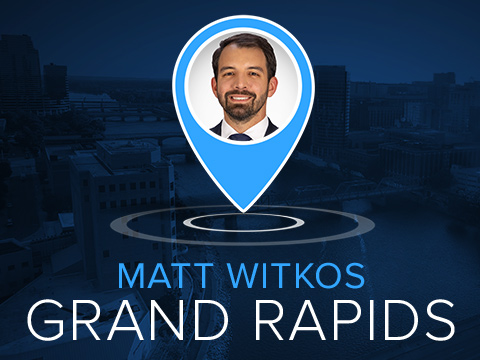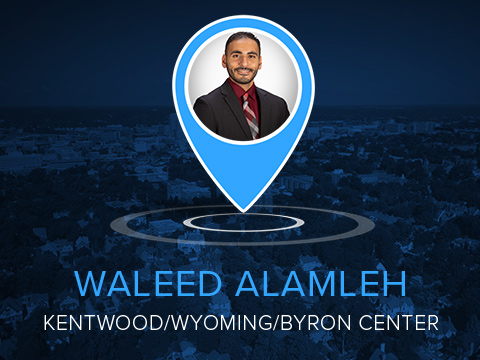GRAND RAPIDS, Mich. — Leaders in Kent County and Grand Rapids are proposing a new program to tackle the recent violence in our community.
It's called "Cure Violence", and leaders say they want to use CARES Act money to make it a reality.
Join the movement to bring Cure Violence to Grand Rapids here.
Cure Violence aims to stop violet crime by placing what they call "Violence Interrupters" in communities. The main goal is stopping and resolving conflict before it rises to the level of gun violence we've seen. It's just a piece of the puzzle of the many resources community leaders say are needed to help young people in Grand Rapids, but it is a start.
“A city within a city, and that’s historic for Grand Rapids,” J.D. Chapman, founder of Realism is Loyalty, said.
JD Chapman got arrested young. He did time for an arrest involving armed robbery and attempted murder. He says it was a drug deal gone bad.
“I was born and raised in the city of Grand Rapids,” Chapman said.
He said his community on the south east side of town feels different than downtown, and historically has.
“How many successful black men do young black boys have to look at in the City of Grand Rapids,” Chapman said.
That's part of what he's hoping to change.
“I was born and bred around here. I was, or the individuals I was involved with was a large part of the violence around here in the early mid-nineties,“ Chapman said.
Ever since getting out of prison, J.D. has dedicated his life to do something to help young men in our community. For him, he sees himself in them. That's why he started Realism is Loyalty, a local non-profit.
“We do mentoring for high and at-risk young adults that are going through transitions,” Chapman said. “I like to focus on extremely high-risk individuals. The little 14 and 15-year-olds with pistols. I can relate to them. I once was them."
J.D. says there are programs now that weren't available back then to help at-risk youth. Programs like Cure Violence.
“You just never know. I don’t know. I don’t care if cure violence don’t save not one life. I believe that the presence of cure violence would at the very least do something about bridging the gap between community-police relations,”Chapman said.
Marcus McAllister from Cure Violence says they did a study in Grand Rapids just last summer. He believes they could do a lot of good work here.
“We hire individuals from the community from the area from the community to be the violence interrupters,” McAllister said.
The key is bringing in people from the community, employing them to do the job, and empowering neighborhoods to take the outcome of their communities into their own hands.
“They’re able to change the behavior of the highest risk, because they themselves may have been had a past and been high-risk in their past,” McAllister said.
Using those real, credible agents, not the police, to stop violence before it starts.
Cure Violence is based on a proven, scientific model that's shown to reduce conflict and violent crime by as much as 30-70 percent in communities.
Last summer, they launched a study in Grand Rapids, but it was never made official.
“At what point do we try other things? Do we push other initiatives? Do we really do something of substance? To get the community that really don’t trust the police, engaged in what’s going on in the community?” Chapman said.
Now J.D. is pushing to make it a reality, along with Second Ward Commissioner Joe Jones.
“I wish I had the answer into why it’s taking so long, but again there is no time like the present. I’m grateful that we’re in a place where I think it’s a matter of weeks before we’re able to announce that it is indeed here,” Jones said.
It's needed. Leaders on all levels agree on that, including Grand Rapids Police Chief Payne.
“The unfortunate thing, is we’ve had 21 homicides this year," Payne said. "We’ve closed 18 of them. The work is being done by law enforcement. With that said, I need my resources do to that work in law enforcement. But we need to look at different programs to bring different outcomes."
The problem arises when it comes to finding someone to pay to bring Cure Violence to Grand Rapids, with little wiggle room in city budgets.
“There is not in the police department budget,” Payne said.
Payne said he'd have to cut personnel he needs if it was taken out of his budget.
The solution, according to local elected officials, comes with the CARES Act, with federal funding Kent County received to allocate to local communities to help get them through the pandemic.
Leaders saying the violence seen in Grand Rapids has undoubtedly gotten worse because of the pandemic, with kids home and nothing to do.
“I advocate that we use COVID funds, to help support these missions, but far beyond that, every person in this community needs to get involved in this initiative,” Kent County Sheriff Michelle LaJoye-Young said.
Community involvement is exactly what J.D. and Annie Vandenberg of Moms Demand Action are hoping will sway leaders to approve that funding.
The group is asking stakeholders in the city to raise $250,000 to express interest and need for a program like Cure Violence.
“We figure that if people can show that they’re committed, to the program, and they believe so much in the program, as small as 5 dollars as much as a 100 dollars, that we can show the city that we’re really confident that this program is the right one,” Annie Vandenberg with Moms Demand Action said.
“So maybe if we had a little financial skin in the game, somebody will listen to us. Maybe.” Chapman said. “I’m willing to try it.”
It's not the end-all solution and local leaders know that. But they also know Grand Rapids needs more than the status-quo.
“It’s crazy that people have assimilated to that. At some point stand up,” Chapman said.











